If you're exploring Odoo as your ERP solution, one of the most common questions you’ll encounter is: Which version of Odoo is the best? With over a decade of active development and continuous innovation, Odoo has released several powerful versions, each offering new features, improvements, and modules designed to make business management smarter and more efficient.
But the "best" version depends largely on your business goals, current challenges, and how you plan to scale. In this article, we’ll explore how to decide which version might suit your business best, highlight notable improvements across versions, and explain why upgrading to newer releases like Odoo 18 could be crucial for staying competitive.
Why Odoo Versions Matter
Odoo releases a new version every year, typically in October, with each version building upon the last. These upgrades include new modules, interface improvements, performance boosts, and industry-specific features.
While older versions may seem more stable due to years of community support, newer versions come with optimised modules, cleaner user interfaces, and innovative features tailored to evolving business demands.
Overview of Key Odoo Versions
Odoo 12 (Released 2018)
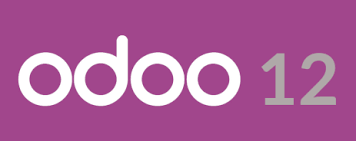
- Strengths: Introduced the Document Management System (DMS) for better record keeping. Offered solid core functionality across Sales, Inventory, Accounting, and Manufacturing. Also supported multi-company operations and delivered faster backend performance compared to earlier versions.
- Best For: Small to medium-sized businesses seeking a stable ERP foundation with basic operational needs and minimal reliance on advanced automation or AI tools.
- Limitations: Lacks modern UI enhancements and automation capabilities found in newer versions. Limited long-term support and fewer integration capabilities with emerging third-party apps.
Odoo 13 (Released 2019)
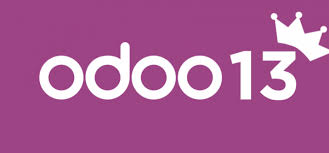
- Strengths: This version introduced new apps like Field Service and eLearning. It enhanced HR capabilities with Skill Management, and offered a more flexible Website Form Builder. It improved backend speed and brought better usability across modules like Payroll and Project Management.
- Best For: Service-based businesses such as consultancies, agencies, and education providers looking for more flexibility and tailored features without moving into AI-heavy territory.
- Limitations: While more feature-rich than version 12, it still lacks the deep automation, AI tools, and refined user interfaces introduced in subsequent versions.
Odoo 14 (Released 2020)
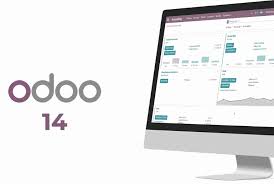
- Strengths: Known for its performance optimisation, faster speed, and the introduction of the Spreadsheet feature (Excel-like tool inside Odoo). It also brought improvements to CRM, Sales, and Website modules.
- Best For: Companies that need a balance between performance and cost-efficiency, especially those with minimal need for the latest UI/UX trends.
- Limitations: Lacks newer AI-driven features and some of the automation tools introduced in later versions.
Odoo 15 (Released 2021)

- Strengths: Introduced a powerful new Website Builder, improved inventory and manufacturing apps, and major enhancements in usability. It also featured more robust reporting tools.
- Best For: Retail, manufacturing, and eCommerce companies looking for a more polished web and backend experience.
- Limitations: Slightly behind in automation and AI compared to Odoo 17 and 18.
Odoo 16 (Released 2022)
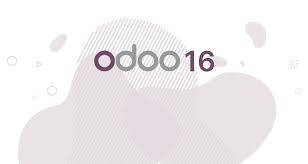
- Strengths: Offered performance boosts across the board, enhanced accounting features (especially localisation for multiple countries), better knowledge base tools, and a stronger focus on document and email marketing integration.
- Best For: Companies with a strong focus on finance, HR, and knowledge management.
- Limitations: Lacks the improved AI/ML tools and UI refinements of 17 and 18.
Odoo 17 (Released 2023)

- Strengths: A more modern and intuitive UI/UX, streamlined workflows across Sales, Purchase, Inventory, and POS. New features in CRM and enhanced mobile responsiveness.
- Best For: Businesses prioritising mobility and user-friendly workflows, especially in retail and distribution sectors.
- Limitations: Not as comprehensive in AI integration as its successor, Odoo 18.
Odoo 18 (Released 2024)
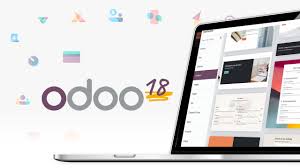
- Strengths: Odoo 18 represents the most advanced and complete ERP experience yet. With a heavier focus on AI-driven suggestions, intelligent automation, improved dashboards, and refined user experiences across modules like HR, CRM, and Inventory. Versions 18.1 and 18.2 introduced bug fixes, further UX improvements, and enhanced performance.
- Best For: Forward-thinking businesses looking for cutting-edge technology, scalability, and long-term value. Odoo 18 is ideal for companies that want to future-proof their ERP strategy.
- Limitations: May require more robust infrastructure and change management to implement successfully, especially for companies migrating from much older versions.
Why You Should Consider Upgrading
Sticking with an outdated Odoo version might seem convenient, but it can quickly turn into a liability. Each year, Odoo rolls out newer versions with updates that don’t just fix bugs — they offer transformational changes that help businesses work smarter, faster, and more collaboratively.
Here’s why upgrading matters:
- Security & Compliance: Older versions no longer receive critical security patches or regulatory updates, increasing vulnerability.
- Access to Latest Features: AI-driven tools, smart forecasting, predictive analytics, and new modules become standard with each release.
- Improved User Experience: Cleaner interfaces, more intuitive navigation, and streamlined processes reduce user frustration and training time.
- Greater Automation: Reduce manual work with smart workflows, better integrations, and advanced triggers.
- Scalability: As your business grows, newer versions make it easier to scale without worrying about performance lags or technical bottlenecks.
- Third-Party App Compatibility: Integration with third-party platforms and APIs is best supported in newer versions, enabling greater flexibility.
In short, upgrading ensures your ERP platform grows with your business, instead of holding it back.
Choosing the Right Version: Key Questions to Ask
- What version are my business processes currently aligned with?
- Can we benefit from the AI and automation tools in newer versions?
- Are we ready to handle change management and staff training?
- Do we have a certified Odoo partner to guide the implementation?
How erpSOFTapp Can Help
At erpSOFTapp, we specialize in helping businesses implement and upgrade their Odoo systems. Whether you’re on Odoo 12 and considering the jump to 18, or you’re just starting out and want to ensure you choose the right version, our certified consultants are here to help you:
- Evaluate your current systems
- Map out your goals
- Identify the most suitable Odoo version for your business
- Seamlessly implement or upgrade with zero downtime

We don’t just offer software, we deliver ERP success. Let’s help you choose the Odoo version that matches your goals and supports your growth.
Contact us at erpSOFTapp to schedule a consultation and find out how we can simplify your ERP journey with the right tools, the right version, and the right partner by your side.
Which Version of Odoo Is the Best? A Guide for Businesses Considering Implementation